Howard Hughes
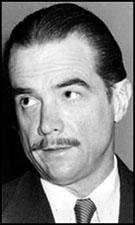
Howard Hughes, the son of Howard Robard Hughes, was born in Houston on 24th December, 1905. Howard's father was the founder of founder of the Hughes Tool Company. His brother, Rupert Hughes, worked as a writer for Samuel Goldwyn's movie studios. His mother, Allene Gano, came from a prosperous family that were considered to be "monarchs of Dallas society".
In 1908 Howard Robard Hughes patented a two-cone rotary drill bit that penetrated medium and hard rock with ten times the speed of any former bit, and its discovery revolutionized oil well drilling. The following year he joined forces with Walter Benona Sharp to establish the Sharp-Hughes Tool Company in Houston. After the death of Sharp in 1912, Hughes took full control of the company that now became known as the Hughes Tool Company.
Hughes attended private school in Boston before moving to the Thacher School in California. According to the principal's son, Anson Thacher, Hughes was "the brightest student in physics the school had in years". Although he idolized his physics teacher, Owen McBride, he was a poor student and never graduated from high school. However, his father arranged for him to attend the Rice University in Houston by donating money to the institution.
Howard Robard Hughes died of an embolism of an artery on 24th January, 1924. when his son was 18. Howard inherited a controlling share in the Hughes Tool Company but his uncle, Rupert Hughes, supervised his business interests until he reached the age of 21. In 1924 Hughes bought out his relatives and became the sole owner of the Hughes Tool Company.
On 1st June, 1925, Hughes married Houston socialite Ella Rice. The couple moved to Hollywood and in 1928 Hughes produced the academy award winning film, Two Arabian Nights. In 1930 Hughes wrote and directed Hell's Angels, a movie about pilots in the First World War. In order to make the movie Hughes obtained 87 aircraft used in the war and hired the world's best pilots. During the filming, a stunt man, Phil Jones, was killed. The movie cost $3.8 million and although a box-office success, it lost over $1.5m.
This was followed by other films such as The Age for Love (1931), The Front Page (1931), Cock of the Air (1932), Scarface (1932) and Sky Devils (1932).
During this period Hughes had sexual relationships with a series of male and female film stars. This included Cary Grant, Randolph Scott, Errol Flynn, Carole Lombard, Billie Dove, Ida Lupino, Bette Davis, Bessie Love, Corinne Griffith, Ava Gardner, Olivia de Havilland, Lilian Bond, Katharine Hepburn, Fay Wray, Ginger Rogers and Gene Tierney. According to his biographer, Charles Higham: "He was a thoughtless, dispassionate lover, seeking only control. His sexual partners were not so much lovers as hostages, prisoners, or victims of his will; he had to dominate in everything."
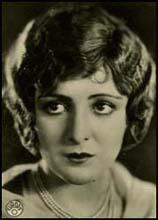
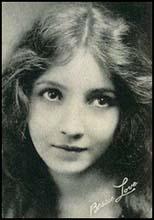
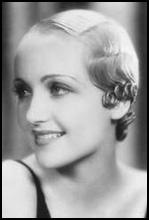
While making Hell's Angels, Hughes developed a strong interest in aviation. In 1932, Hughes formed the Hughes Aircraft Company. In 1934 Hughes built and personally test-piloted the world's most advanced plane, the H-1. On September 13, 1935, he set a new speed record, taking the plane to 352 mph. Three years later Hughes piloted a Lockheed 14 with a crew of four on a flight around the world. During the flight he broke the New York to Paris record that had previously been held by Charles Lindbergh.
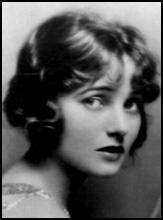
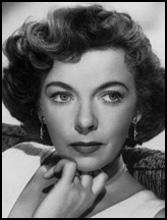
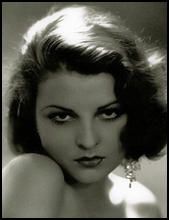
On 11th June 1936 Hughes was driving on Wilshire Boulevard when he struck and killed a pedestrian named Gabriel Meyer. Hughes was arrested and charged with manslaughter. Despite the fact that pedestrians had right-of-way in Los Angeles and that he had broken the law through reckless driving, Hughes was released without charge. In his book, Howard Hughes: The Secret Life (2004), Charles Higham argues: "In those days, the District Attorney could be bought and sold, and anyone with sufficient money could get away with almost anything."
In 1938 Hughes began living with Katharine Hepburn although he continued to sleep with Cary Grant, Fay Wray, Ginger Rogers and Olivia de Havilland. Later that year Hepburn discovered what was happening she left him and moved back to her home in Connecticut. In her autobiography, Me: Stories of My Life, she pointed out that her "love for him had turned to water."
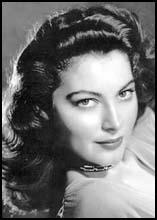
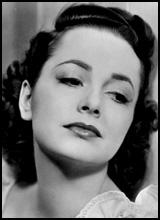
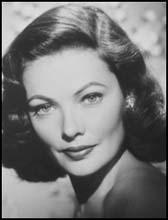
By 1938 Hughes was worth about $60 million. Most of this came from Hughes Tool Company, which was run by Noah Dietrich. He also served as an executive for RKO Pictures and Hughes Aircraft. In 1939 Dietrich began buying shares in Trans World Airlines (TWA) on behalf of Hughes. Eventually, Hughes held 78% of the stock in the company.
During the Second World War Hughes became interested in building military aircraft. He was awarded two contracts, of $18m and $22m each, to create and build two revolutionary aircraft - a giant plywood cargo seaplane that could carry thirty-five tons of men and weapons (HK-1), and a very fast photo-reconnaissance aircraft (F-11).
Hughes also returned to film making and in 1943 produced and directed The Outlaw. The film starred Jane Russell and because of her conspicuous cleavage was initially banned. The following year Hughes formed a production company with Preston Sturges.
During this period he had sexual relationships with Tyrone Power, Russell Gleason, Richard Cormwell, Linda Darnell and Rita Hayworth. However, Hughes was turned down by Lana Turner. His biographer, Charles Higham, pointed out: "The beautiful blonde actress, feisty, strong-willed, wildly ambitious, was a far cry from the placid, pliable stars he was sharing his busy bed with. In fact she made it clear she had no interest in having a physical affair with him."
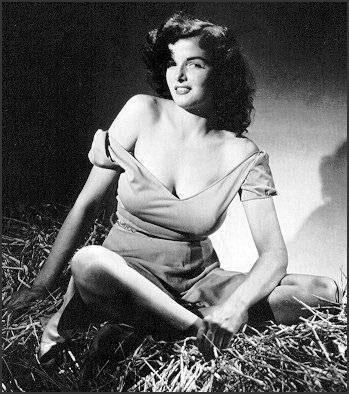
In 1945, the journalist, Westbrook Pegler, claimed that he had seen FBI files that said that Hughes had used his wealth to corruptly obtain government contracts. The following year Owen Brewster, chairman of the Senate War Investigating Committee, announced that he was very concerned that the government had given Hughes $40m for the development and production of two aircraft that had never been delivered. Brewster also pointed out the President Franklin D. Roosevelt had overruled his military experts in order to hand out the contracts to Hughes for the F-11 and HK-1 (also known as the Spruce Goose).
Brewster also pointed out that Hughes had provided "softening-up parties" for government officials. Howard paid movie starlets $200 to attend these parties. Their duties included swimming nude in Hughes's swimming pool. Julius Krug, the chief of the War Production Board, was someone who often attended these parties. One congressman who was also a frequent guest at Hughes's home claimed: "If those girls were paid two hundred dollars, they were greatly underpaid".
Hughes, accused of corruption, leaked information to journalists, Drew Pearson and Jack Anderson, that Owen Brewster was being paid by Pan American Airways (Pan Am) to cause trouble. According to Hughes, Pan Am was trying to persuade the United States government to set up an official worldwide monopoly under its control. Part of this plan was to force all existing American carriers with overseas operations to close down or merge with Pan Am. As the owner of Trans World Airlines, Hughes posed a serious threat to this plan. Hughes claimed that Brewster had approached him and suggested he merge Trans World with Pan Am. When Hughes refused Brewster began a smear campaign against him.
Drew Pearson and Jack Anderson believed Hughes and began their own campaign against Owen Brewster. They reported that Pan Am had provided Bewster with free flights to Hobe Sound, Florida, where he stayed free of charge at the holiday home of Pan Am Vice President Sam Pryor. These charges were repeated by Hughes when he appeared before the Senate War Investigating Committee. He also accused Brewster of trying to blackmail him into merging Trans World with Pan Am. Brewster denied the charge but it helped divert attention away from the charge that Hughes had wasted $40m of government money.
The Senate War Investigating Committee never completed its report on the non-delivery of the F-11 and the HK-1. The committee stopped meeting and was eventually disbanded.
Hughes continued to use his power to seduce Hollywood stars. When Jane Greer, who was married to Edward Lasker, rejected his advances, she asked him: "Will that mean the end of my career?" He replied, "Yes, I guess it will". Greer retorted: "Well, I'll just keep having babies".
Hughes' girlfriends in the early 1950s included Yvonne De Carlo, Rita Hayworth, Barbara Payton, Jean Peters and Terry Moore. When Hayworth became pregnant Hughes and Harry Cohn, her studio boss, forced her to have an abortion. He also had a brief relationship with Zizi Jeanmaire. However, she later claimed he was impotent with her.
Hughes became involved in politics and was a secret supporter of Richard Nixon. In 1956 the Hughes Tool Company provided a $205,000 loan to Nixon Incorporated, a company run by Richard's brother, Donald Nixon. The money was never paid back. Soon after the money was paid the Internal Revenue Service (IRS) reversed a previous decision to grant tax-exempt status to the Howard Hughes Medical Institute.
In 1956 Hughes began to employ Robert Maheu, a former FBI agent and veteran of CIA counter-espionage activities, on a freelance basis. This included intimidating would be blackmailers and obtaining information on business rivals. According to the author of Howard Hughes: The Secret Life (2004), Maheu "was his most trusted telephone companion apart from Jean Peters".
Robert Maheu was asked to spy on Ava Gardner and Stuart W. Cramer, the former husband of Jean Peters. Maheu discovered that Cramer was a CIA agent. In 1956 Hughes employed Maheu to undermine the campaign to replace Richard Nixon with Christian Herter, as President Eisenhower's running-mate.
Hughes proposed marriage to Jean Simmons and Susan Hayward. After being rejected by these women he eventually married Jean Peters in 1957. The couple lived in a large bungalow in Palm Springs. He was already showing signs of extreme hypochondria and paranoia. This included a fear of flies. According to Charles Higham Hughes "hired three strapping Mormons to work in eight-hour shifts at the bungalow (where he lived), not just to make sure he wasn't killed, but to intercept the insects."
The Hughes loan to Donald Nixon was revealed by during the Drew Pearson and Jack Anderson during the 1960 presidential campaign. Richard Nixon initially denied the loan but later was forced to admit that this money had been given to his brother. It was claimed that this story helped John F. Kennedy defeat Nixon in the election.
In 1960 Richard Bissell and Allen W. Dulles decided to work with the Mafia in a plot to assassinate Fidel Castro. Maheu was employed by the CIA to organize the conspiracy. The advantage of employing the Mafia for this work is that it provided CIA with a credible cover story. The Mafia were known to be angry with Castro for closing down their profitable brothels and casinos in Cuba. If the assassins were killed or captured the media would accept that the Mafia were working on their own.
On 25th September, Robert Maheu arranged for two CIA agents to meet Johnny Roselli and Sam Giancana, at the Fountainebleau Hotel on Miami Beach. Maheu told Roselli and Giancana that the CIA was willing to pay $150,000 to have Castro killed.
According to Bernard Barker Hughes worked with E. Howard Hunt in the secret CIA war against Fidel Castro. This included Operation Mongoose and Operation Pluto. This included Hughes making available his Sal Cay island in the Bahamas. The Miami Herald reported on 25th August 1963: "Cay Sal has served a dual purpose, as a rendezvous and arms storehouse for exile raiders, and, for anti-Castro refugees, the first stop to freedom, a gateway similar to the Berlin Wall to anti-Communist East Germans."
Hughes made a fortune selling helicopters to the government during the Vietnam War. However, accused of overcharging and slow to delivery the necessary helicopters, he found himself excluded from a contract that went to his chief rival, Bell Helicopter. Hughes' companies lost $268 million in three years.
Hughes sold his Trans World Airlines stock in 1966 for $546m. He now moved to Las Vegas where he used his money to buy up four hotels and six casinos. He employed Robert Maheu to oversee this business. Maheu explained later what his role was in the operation: "When he came here, he wanted to tie up all the property on the Strip to develop it properly. He didn't want it to be honky-tonk or like Coney Island. Hughes was a catalyst in the city cleaning up its act."
In 1965 the Atomic Energy Commission announced it was going to begin nuclear tests at Pahute Mesa, only 150 miles from the home of Howard Hughes. He contacted Richard Nixon but he refused to oppose these tests. During the 1968 presidential campaign Robert Maheu met with Hubert Humphrey in Denver. Maheu told Humphrey that Hughes was willing to pay him $100,000 if he was willing to do something about these nuclear tests. Humphrey promised that if he was elected he would appoint a committee of scientists to study the effects of radiation.
According to the author of Howard Hughes: The Secret Life (2004): "Hughes was delighted and pledged $300,000 to that committee. Now an elated Hughes dreaded that Bobby Kennedy would defeat Humphrey, who, in every way, lacked the glamour, charisma and ineffable name of his rival candidate. If only Bobby would die." On 4th June, 1968, Robert Kennedy was assassinated. Hughes was worried that Edward Kennedy would takeover from his brother and so he decided to buy Larry O'Brien, Kennedy's expert campaign manager. Robert Maheu met O'Brien in Las Vagas on 4th July, 1968. As a result of the meeting it was agreed that Hughes would pay O'Brien $15,000 a month
Hughes also employed Larry O'Brien to protect his interests in Washington. O'Brien was also chairman of the Democratic National Committee. On 20th March, 1972 Frederick LaRue and John Mitchell of the Nixon's re-election committee decided to plant electronic devices in O'Brien's Democratic campaign offices in an apartment block calledWatergate. Frank Sturgis, Virgilio Gonzalez, Eugenio Martinez, Bernard L. Barkerand E.Howard Hunt were later arrested and imprisoned for this crime.
Hughes became a recluse but continued to run his business interests from sealed-off hotel suites. His health deteriorated and he died April 5, 1976, en route by private jet to a hospital in Houston. He left an estate estimated at $2 billion.
Primary Sources
(1) Mark Fisher, Howard Hughes (April, 2003)
As fantastically wealthy manipulators go, Howard R. Hughes was king. The billionaire's Midas touch had less to do with his fabled technical and financial genius than with endless secret deals and covert political bribes. "I can but any man in the world," Hughes liked to boast. Indeed, Hughes's conspiratorial authority stemmed from his ability - and eager inclination purchase loyalty from anyone, including the president of the United States, in a position to advance his, well, idiosyncratic designs.
Everything about Hughes was larger than life, including his paradoxical legend. Heir to a Houston fortune based on a drill bit patent that revolutionized oil mining, the dashing young Hughes captured the American imagination during the Great Depression years. Cowboy aviator, Hollywood playboy, patriotic military contractor, maverick financier, Hughes was a comic book hero whose can-do exploits knew no limits. Later in life, as his eccentricities metastasized into madness, the darker portrait emerged: the stringy-haired old man, a real lunatic with a mortal fear of germs holed up in a penthouse hermitage.
Throughout his life, Hughes's obsession with control expressed itself in a mania for espionage and spookery, especially as it applied to nurturing his substantial neuroses. However, despite his seeming omnipresence in the eye of many a stormy conspiracy, Hughes was just as manipulated by others. Known to spooks as the "Stockholder," Hughes fronted for CIA covert operations, sometimes unknowingly; Hughes, the demented shut-in, saw his empire manipulated by remote control.
We join the Hughes saga during the late 1950s, with the arrival of the shadowy and some sleazy Robert Maheu, fountainhead of many real and imagined Hughes conspiracies. In the fifties, Hughes hired Maheu to intimidate would-be blackmailers and spy on dozens of Hollywood starlets toward whom Hughes felt possessive. Maheu was a former FBI man whose private security firm fronted for the CIA on ultra-sensitive (read: illegal) missions. By the time he became Hughes's private spook, Maheu already had impressive credentials supervising contract kidnappings for the CIA and acting as the Agency's literal pimp, hiring prostitutes to service foreign dignitaries and their peculiar sexual appetites. Maheu's most notorious CIA job was a go-between in a failed 1960 plot to assassinate Fidel Castro, which recruited the Mafia to do the "hit." Friendly with the darndest folks, Maheu enlisted the aid of Vegas mobster John Roselli ("Uncle Johnny" to Maheu's children), Chicago godfather Sam "Momo" Giancana, and powerful Florida mob boss Santos Trafficante. Apparently, Hughes had no involvement in Maheu's freelance CIA work but delighted in the spook's exploits and connections, which only enhanced the billionaire's reputation and influence. (According to journalist Jim Hougan, Maheu informed Hughes of his efforts on behalf of the CIA to kill Castro.) By some accounts, however, the Stockholder was the Agency's largest contractor. In dedicating his resources to the CIA, though, Hughes wasn't guided entirely by selfless motives. During the late sixties, he asked Maheu to offer his empire to Agency as a CIA front. At the time the Hughes fortune was threatened by major legal trouble the beleaguered billionaire hoped to deflect the nettlesome litigation with a "national security shield".
(2) Spruce Goose, Flight-Line Online ( 2004)
When America entered the second world war our geographic isolation from the areas of conflict gave us a distinct advantage over our enemies. The technology of the time simply made it too difficult for those fighting against us to mount serious action against our homeland. In the end, this advantage left us the time and manufacturing power to smother our foes with an unending supply of the materials necessary to wage war. But we also had to overcome the vast distances, we had to find ways to safely deliver these materials, and men to use them, to the areas of conflict around the world. At the time, ships were the only way to get the job done and the men doing it were finding that it was very dangerous work! Shipyards across America were at full production but enemy submarines were sinking the critical vessels nearly as fast as they could be built. Something had to be done.
The idea for the HK-1 flying boat came from Henry Kaiser... Head of one of the largest shipbuilding firms of the time, Kaiser thought a ship that could fly over the danger might be the answer. Howard Hughes was known as an innovator in aircraft construction and design. These two men, both legends in their own time, would launch the venture to build the huge craft (originally three were to be built). The new plane's official name bore the initials of the principals in the project HK-1....But to most of us it's always just been "Spruce Goose".
The huge plane would be made primarily of wood, saving materials critical to the war effort. The difficulties creating such a large airframe made of wood were unknown at the beginning of construction and would prove to be many. The final product is a tribute to the efforts of the team in overcoming the problems they faced. A structure made of lumber was created that, even on close inspection, bears little resemblance to any form of wood! Hughes would prove to be a demanding taskmaster during the period of development and construction. His attention to detail and insistence everything on the new plane be nearly perfect, was largely responsible for both the beauty of the finished product and it's not being ready to fly until after the war had ended.
The timing of completion and final cost brought Hughes and the project under the critical eye of the post-war congress, one Senator grudgingly referring to the plane as "The flying lumberyard". Howard Hughes was called to Washington D.C. to defend both the project and himself. During a break in the hearings, he flew back to California to conduct a test on the "Goose", it was during this test the accidental flight took place. This event, whether intended or not, put a halt to critics of the project and served as the finale for this gigantic aircraft ...... the project was dead. Though his feathers had been ruffled by the intense questioning he had endured, the flight had vindicated Hughes and the project. The HK-1, which by now would be known forever as the "Spruce Goose", was put into storage . It remained hidden from public view, carefully preserved, until after Howard Robard Hughes death in April of 1976.
(3) Jack Anderson, Confessions of a Muckraker (1979)
My mentor's sympathies, then, lay with (Howard) Hughes, but Drew (Pearson) felt stranded in an unsatisfying posture. It was his nature to want to play an important part in the great political brawls of the time, to put his mark on them, to help shape their outcome toward the benefit of his causes or the distress of his foes. Yet he would not take Brewster's side and could not take Hughes's. For though Hughes was probably the victim of an unsavory gang-up, his own conduct in the matter was too shabby to defend and he was not even making a fight of it himself. Grumbling at each day's leaks, Drew held back, watching the thing spin, looking for a handle to pick it up by.
At this point in his disintegrating fortunes, Howard Hughes phoned Drew from one of his West Coast redoubts. He had long considered Pearson to be journalism's leading molder of public opinion and the man most knowledgeable about the Byzantine twists of conspiratorial Washington. And since Drew's animus against Hughes's tormentors was clear, there was a mutuality of interest present that encouraged him to seek Drew's help and advice.
In the manner of cornered men whose expense accounts have already been made public, Hughes admitted to misdemeanors but pled innocent to felonies. He had indeed wined and wenched government officials and military brass, sometimes to excess. It was necessary, he said; his competitors did it, and as a relative newcomer trying to buck long-entrenched interests and liaisons, he had to play the game in order to get a hearing on his proposals. He had never looked on aviation as a moneymaker, he insisted; he was in it because he had a passion for it. He yielded to no man in his mastery of the dark arts of making money, as the astronomical profits of his other businesses showed, but in aviation, he had lost $14 million in thirteen years.
Then he got to the nub: three months before, Brewster had attempted to lobby him in behalf of Pan Am, he said, and having failed, they were both out to destroy him. Pan Am had put great pressure on him to merge Trans World with Pan Am and co-sponsor the chosen-instrument plan. Brewster himself had told him at the Mayflower Hotel that the probe would be dropped if he joined forces with Pan Am.
(4) Drew Pearson, Washington Merry-Go-Round (18th September, 1950)
Senator Brewster in 1947 was chairman of the powerful Senate War Investigating Committee. He was also the bosom friend of Pan American Airways. Brewster and Pan American wanted Howard Hughes's TWA to consolidate its overseas lines with Pan Am. This Hughes refused to do. Whereupon Brewster investigated Hughes, and, during the period when he was before Brewster's Senate committee, Hughes's telephone wire and that of his attorneys were tapped, apparently under the off-stage direction of Henry Grunewald, who admits that at various times he checked telephone wires for Pan American Airways.
Grunewald and others deny this. Nevertheless this is the conclusion which Senators are forced to arrive at. No wonder businessmen who come to Washington are worried about talking over telephones. They never know when some competitor, perhaps with the cooperation of a Senate committee, is listening in. Yet this is supposed to be the capital of the USA not Moscow.
(5) Hank Greenspun, Las Vegas Sun (18th December, 1977)
There was no way to tell, from one day to another, while Mr. H. R. Hughes was resident among us earthlies, what would come from the mind and pen of the world's most famous recluse.
As in a memo introduced in the Mormon Will trial from a collection of original writing owned by this columnist, one day he would recommend you for a Nobel Peace Prize and the next day he would be plotting a means for your total destruction.
It would take a gyrating mind like his to keep up with the course he had laid out and which was subject to change at a moment's notice through will and caprice.
In the memo placed in evidence, and reproduced on the front page of Friday's SUN, he referred to the fact that "Hank has allied himself with us."
For the record, this editor had not allied himself with anyone but his own beliefs.
Hughes was discussing an editorial I had written suggesting we should proceed cautiously on nuclear testing until we learned what caused the sudden deaths before any more tests were made.
The mere suggestion that a slowdown is indicated caused Mr. Hughes immediately to assume that I now was in his corner insisting that the Test Site be shut down.
What I was indicating was most sensible and legitimate because a few days later, when news had come out that the sheep had died of a nerve gas being tested in Utah, I immediately wrote that the underground program in Nevada must proceed as long as Russia was continuing with nuclear exploration.
I did believe that we must not rush pell mell into radiation destruction until we learned what happened to the sheep. Humans should not be subjected to a similar fate.
There will be other memos produced in court before the trial is concluded which will show the almost irrational behavior of the man who caused more battles in the courts of the nation than any single individual or even corporate establishment.
Most of the legal involvements were instigated by his past General Counsel Chester Davis and also a few Las Vegas law firms, holdovers from the Davis-Bill Gay combine who are still sucking at Summa's financial resources for all they can get, but many were still caused by Hughes' own brilliance at one moment and his downright Machiavellian behavior the next without changing pens or paper.
One memo will show from his own writings how he tried to stop Kirk Kerkorian from building the International, now the Hilton, and other hotels from being built unless he had total control over the gaming industry.
For too many years since his departure, I have permitted myself to be pictured as the villain in the relationship waiting for some opportunity to prove by a jury of my community peers where the fault lay.
On national TV, whenever I was questioned as to the effect Hughes had on the Nevada scene, I would respond that it was positive in many areas but detrimental in others. By his own writings, the people of Las Vegas and the entire state will now be able to judge for themselves which man had the community interest at heart.
I was his strongest advocate in the good he wrought, but also his severest critic in his monopolistic endeavors and his attempt to corrupt every public official at every level in local, state and national government.
(6) Carl Oglesby, The Yankee and Cowboy War (1976)
Howard Hughes's name surfaced in the story of Watergate on May 20, 1973, when James McCord told the Ervin committee and its media audience of an abandoned 1972 White House plot to steal certain documents from the safe of editor Hank Greenspun's Las Vegas Sun. Greenspun was an ally of Robert Maheu, the top Hughes aide who connected the CIA and the Mafia in 1960, who came to prominence in the Hughes empire during the Las Vegas period, and who then lost out in the Las Vegas power struggle that violently reconfigured the Hughes empire late in 1970. McCord testified that his fellow Plumbers, Hunt and Liddy, were to have carried out the break-in and theft of the papers and that Hughes interests were to have supplied them with a getaway plane and a safe hideout in an unnamed Central American country.
What could the Greenspun documents have been? Why should both Hughes and Nixon have been interested enough in them to attempt a robbery?
Liddy said (testified McCord) that Attorney General John Mitchell had told him that Greenspun had in his possession blackmail type information involving a Democratic candidate for President, that Mitchell wanted that material, and Liddy said that this information was in some way racketeer-related, indicating that if this candidate became President, the racketeers or national crime syndicate could have a control or influence over him as President. My inclination at this point in time, speaking as of today, is to disbelieve the allegation against the Democratic candidate referred to above and to believe that there was in reality some other motive for wanting to get into Greenspun's safe.

